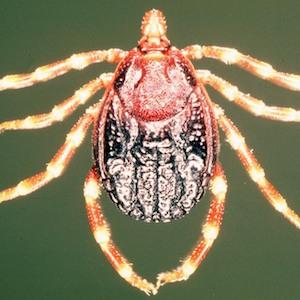Ebola is the most famous of the hemorrhagic fever viruses, but it’s not the only one.
What is commonly called "Ebola" is more specifically the species Zaire ebolavirus, which belongs to the genus Ebolavirus. This group also contains nasty species called Bundibugyo, Sudan, and Taï Forest ebolavirus. Marburgvirus, a separate genus, contains the human pathogenic viruses called Marburg and Ravn. These diseases are largely limited to Africa.
Not so for Crimean-Congo hemorrhagic fever (CCHF). This killer, which is a member of the order Bunyavirales, is completely unrelated to the aforementioned viruses. CCHF has caused outbreaks throughout the Middle East and Asia, infecting more than 1,000 people every year since 2002. (See figure. The orange countries are endemic for CCHF, and "CFR" refers to the case-fatality rate, which ranges from roughly 4% to 20%.

Credit: H. Leblebicioglu et al., Am J Infect Control.
Unlike the Ebolavirus and Marburgvirus, which tend to be spread by direct contact with infected bats or primates (including humans), CCHF is transmitted by ticks, though it can also spread human-to-human. A recent report from the CDC describes an outbreak that occurred in central Uganda last summer.
The authors report seven cases of CCHF (two confirmed, five suspected), and they performed a case-control study to determine the cause of the outbreak. Each case was matched with four healthy neighbors as controls (for a total of 28 controls), each of whom were of the same sex and similar age as the afflicted.
The team discovered that the odds of tick exposure among cases was 11 times that among controls. Indeed, subsequent analyses revealed that 60% of cattle and 24% of goats where the cases worked had antibodies against CCHF, indicating that these animals had been exposed to the virus.
Though two of the patients died, the quick response by public health officials can be deemed a success. The community was immediately notified on how to avoid contracting CCHF, and no more cases developed.
Let us hope that future CCHF outbreaks go as smoothly.
Source: Kizito S, Okello PE, Kwesiga B, et al. "Notes from the Field: Crimean-Congo Hemorrhagic Fever Outbreak — Central Uganda, August–September 2017." MMWR 67 (22): 646-647. DOI: 10.15585/mmwr.mm6722a6.




